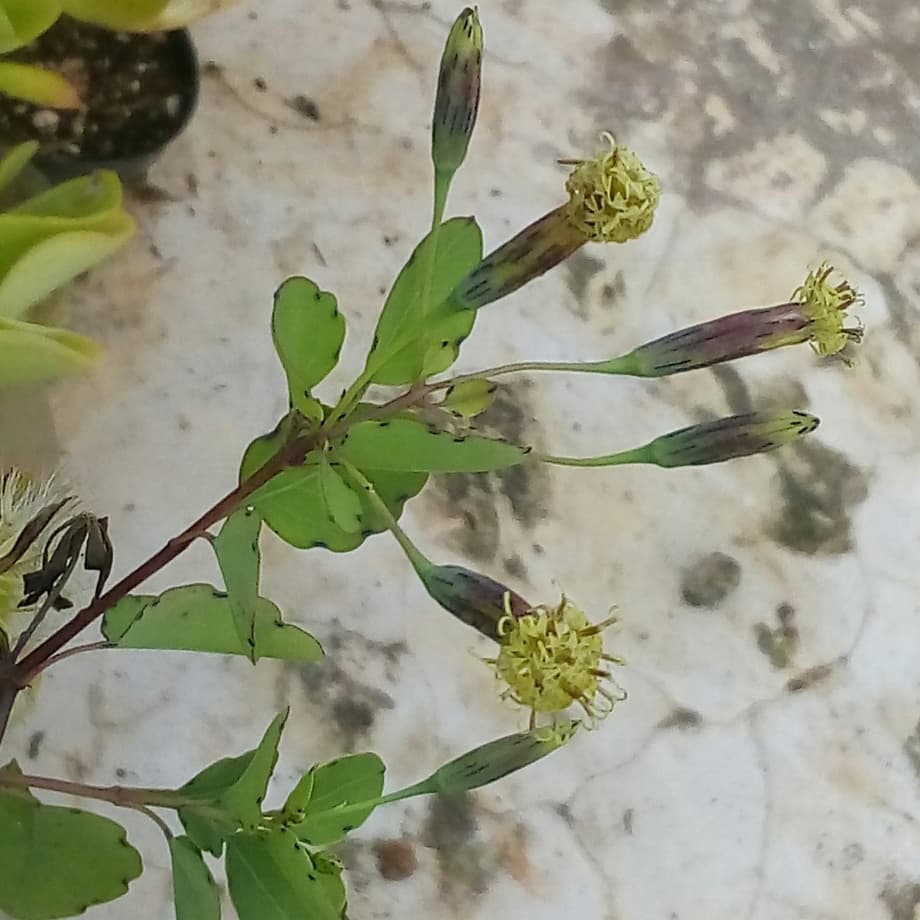also called, quelite de venado, lapandzi, lapantsi, átlapántsin, aclapanchis, papalo de cerro, papalo criollo

Jesús Hoyos Hernández on his blog (1) speaks of this herb. It is not very well known and can be confused with papalo as it is similar in appearance although, according to Jesús, its aroma and taste is very different. This plant has previously been identified as P.punctatum but P.pringlei, P.ruderale, P.nutans (2) and P.calcicola have also been put forward as contenders. (de Avila 2010)
- http://proyectandoamexico.blogspot.com.au
- Programa de Manejo Reserva de la Biosfera Tehuacán-Cuicatlán El tiraje consta de 500 ejemplares, se terminó de imprimir en el mes de enero de 2013, en los Talleres de Litografía Mier y Concha, S.A. de C.V. Cadaques No. 69, Col. Cerro de la Estrella, Delegación Iztapalapa, C.P. 09860, México, D.F
Tlapanche is well known in La Mixteca (1). It is said that if you want to find this herb then you must look in the red earth in the corners and valleys of La Sierra (2).
- La Mixteca is a cultural, economic and political region in Western Oaxaca and neighbouring portions of Puebla, Guerrero in south-central Mexico, which refers to the home of the Mixtec people. The region includes the districts of Juxtlahuaca, Silacayoapam, Huajuapan, Coixtlahuaca, Teposcolula, Tlaxiaco and Nochixtlán.
- The mountains
It is a highly sought after quelite in the rainy season in the Puebla Mixteca. It is a small plant with elliptical leaves similar to those of alfalfa and it grows completely wild in the hills. Its taste and smell is very delicate and reminiscent of papalo and pipicha.


Crotalaria longirostrata, the chipilín, is a perennial legume that is native to Central America. Chipilín leaves are a common leafy vegetable in the local cuisines of southern Mexico, including Chiapas, Oaxaca, and Tabasco, and Central America, especially El Salvador and Guatemala. The leaves are high in iron, calcium, magnesium, and beta carotene. They can be boiled and served green, dried and used as an herb, or added to tamale doughs for colour and flavour.



This plant is certainly a contender

A farmers market in Brooklyn (U.S.A) is advertising the above plant as tlapanche. I think there has been an error in identification of this plant. It is a narrow leaf variety of poreleaf more akin to chepiche/pipicha rather than a broad leaf variety which tlapanche is generally accepted to be.


Varieties of tlapanche found in San Felipe Otlaltepec (Puebla): Photos via San Felipe Otlaltepec on Facebook.


Other plants called tlapanche.
The plant Nicandra physalodes has also been called tlapanche. This plant, also known as the Apple of Peru is not interchangeable with tlapanche. It is not considered poisonous to humans (1) but it is not known for its palatability.
- although it has been suspected of poisoning sheep who have grazed upon it. (Lewis etal 1977)(Everist 1981)

Medicinal Use:
Martinez-Perez (etal 2012) notes that tlapanche (or tlapanche de venado) is used medicinally in Buenavista de Juárez (Puebla) but only lists the plant as Porophyllum species (no specifics given) and gives no other information on how it is used medicinally. Another variety of Porophyllum is named, “Fraile”, but other than “Porophyllum species”, no other information is given.
References
- de Avila, A. (2010). Mixtec plant nomenclature and classification. UC Berkeley. ProQuest ID: deAvila_berkeley_0028E_11116. Merritt ID: ark:/13030/m57m0d2m. Retrieved from https://escholarship.org/uc/item/4pp843br
- Everist, S. L. (1981). Poisonous plants of Australia. London ; Sydney : Angus & Robertson
- Lewis, Walter Hepworth and Memory Elvin-Lewis, P.F. Medical Botany : Plants Affecting Man’s Health pub. Wiley-Interscience / John Wiley & Sons Inc. 1977.
- Martinez-Perez, Aniceto & López, Pedro & Gil-Munoz, Abel & Axayacatl, Jesus. (2012). Useful and relevant wild plants identified in the Mixteca Poblana, Mexico. Acta botánica Mexicana. 98. 73-98.

